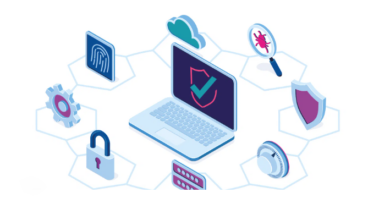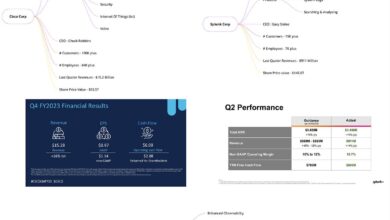
Australia to Issue Ransomware Payment Ban After Latitude Attack
Australia to issue ban on ransomware payments after Latitude Financial cyber attack: This massive data breach, impacting millions of Australians, has spurred the government into action. The proposed ban on paying ransoms aims to curb cybercrime, but will it actually work? This isn’t just about Latitude; it’s about the future of cybersecurity in Australia and the potential ripple effects across the globe.
We’ll delve into the details of the attack, the proposed legislation, and what this means for businesses, both big and small.
The Latitude Financial cyberattack exposed sensitive personal information, including driver’s licenses, passport numbers, and Medicare details. The sheer scale of the breach and the sensitive nature of the stolen data have understandably caused public outrage and prompted a serious reassessment of Australia’s cybersecurity landscape. The proposed ban on ransomware payments is a bold move, aiming to disrupt the financial incentives behind these attacks.
However, the effectiveness of such a ban remains a subject of debate, with concerns raised about potential unintended consequences and the challenges of enforcement.
The Latitude Financial Cyberattack: Australia To Issue Ban On Ransomware Payments After Latitude Financial Cyber Attack
The Latitude Financial cyberattack, occurring in February 2023, serves as a stark reminder of the ever-present threat of sophisticated cybercrime targeting major corporations. The breach exposed sensitive personal information of millions of customers, highlighting the devastating consequences of inadequate cybersecurity measures and the urgent need for robust data protection strategies within the financial sector. This attack’s scale and impact have far-reaching implications, influencing both regulatory responses and corporate security protocols.The Latitude Financial cyberattack involved the theft of a significant amount of customer data.
The breach compromised approximately 14.7 million Australian and New Zealand customers’ personal information. This included names, addresses, dates of birth, driver’s license numbers, passport numbers, Medicare numbers, and even some customers’ driver’s license photos. The timeline began with the initial breach in February, followed by the confirmation of the attack and subsequent data disclosure by Latitude Financial. The company subsequently notified affected individuals and implemented various remediation measures, including credit monitoring services.
The entire incident unfolded over several weeks, culminating in a significant public relations crisis and legal ramifications.
Scale and Type of Data Compromised
The sheer scale of the Latitude Financial data breach is staggering. The compromise of 14.7 million records makes it one of the largest data breaches in Australian history. The types of data stolen extended far beyond basic contact information. The inclusion of sensitive identification documents like driver’s licenses and passports, along with health information such as Medicare numbers, presented a substantial risk of identity theft and fraud for affected individuals.
This extensive data exposure underscores the severity of the attack and the potential for long-term consequences for both the victims and the company.
Financial and Reputational Impact on Latitude Financial, Australia to issue ban on ransomware payments after latitude financial cyber attack
The financial repercussions for Latitude Financial are expected to be substantial. The costs associated with notifying affected customers, providing credit monitoring services, legal fees, and potential regulatory fines will likely run into the tens of millions of dollars. Beyond the direct financial losses, the company has suffered significant reputational damage. The breach eroded customer trust and damaged the company’s brand image, potentially impacting future business prospects and market valuation.
The incident highlighted the vulnerability of financial institutions to sophisticated cyberattacks and the critical importance of proactive cybersecurity measures.
Comparison to Other Significant Ransomware Attacks Globally
The Latitude Financial attack shares similarities with other major ransomware attacks globally, particularly in terms of the scale of data compromised and the type of sensitive information targeted. While not explicitly confirmed as ransomware, the nature of the breach, the theft of sensitive data, and the subsequent data disclosure strongly suggest parallels to attacks like the Colonial Pipeline ransomware attack in 2021 or the NotPetya attack in 2017.
These attacks, along with the Latitude Financial breach, demonstrate the increasing sophistication of cybercriminal tactics and the global reach of these threats. The common thread is the exploitation of vulnerabilities in corporate systems to gain access to valuable data, ultimately leading to significant financial and reputational damage for the affected organizations. The difference lies in the specific methods employed and the precise data stolen; however, the devastating impact remains consistent.
Australia’s Proposed Ransomware Payment Ban

Following the highly publicized Latitude Financial cyberattack, Australia is considering significant changes to its approach to ransomware. The proposed legislation aims to curtail the lucrative ransomware business model by making payments illegal, a move that has sparked considerable debate.The proposed legislation seeks to criminalize the payment of ransoms to cybercriminals. This would involve amending existing laws to explicitly prohibit the transfer of funds to individuals or entities known to be involved in ransomware attacks.
Penalties for non-compliance could include substantial fines and even imprisonment, depending on the severity of the offense. The aim is to disrupt the financial incentives driving ransomware attacks, thereby reducing their frequency and impact on Australian businesses and individuals. This is based on the premise that removing the financial reward will make ransomware attacks less attractive to perpetrators.
Rationale Behind the Ban
The rationale behind the ban rests on the belief that the current landscape, where paying ransoms is often seen as the path of least resistance, encourages further attacks. By making payments illegal, the government hopes to shift the risk-reward calculus for cybercriminals. The intended effects include a decrease in the number of ransomware attacks targeting Australian entities, a reduction in the overall financial losses suffered, and a potential deterrent effect on other malicious cyber actors.
The government also argues that paying ransoms often doesn’t guarantee the return of data, and frequently emboldens attackers to target the same victim or others again.
Potential Legal Challenges and Loopholes
While the intention is laudable, the proposed ban faces potential legal challenges. One major concern is the definition of a “ransom payment.” The legislation needs to be carefully worded to avoid unintentionally criminalizing legitimate transactions or inadvertently creating loopholes that malicious actors could exploit. For instance, what constitutes “knowledge” of the recipient’s involvement in ransomware? This could be difficult to prove in court.
Another challenge could be the enforcement of the law across jurisdictions, particularly where the attackers operate outside of Australia. There’s also the question of whether victims will risk prosecution to recover critical data, even if the payment is illegal. The effectiveness of the ban will hinge on robust investigative capabilities and international cooperation to track and prosecute perpetrators.
Comparison with Similar Laws in Other Countries
Several countries have already implemented or are considering similar legislation. The effectiveness of these laws varies, and a comparative analysis is crucial.
| Country | Legislation | Key Features | Effectiveness |
|---|---|---|---|
| United States | No federal ban, but various state-level guidance and enforcement actions. | Focus on prosecution of attackers, not victim culpability. Emphasis on cybersecurity best practices. | Mixed results; enforcement varies widely. |
| United Kingdom | Guidance and advisories discouraging payments, no explicit ban. | Focus on national cybersecurity strategy and incident response. | Limited impact, relies heavily on voluntary compliance. |
| Germany | No explicit ban, but strong emphasis on reporting and investigation. | Focus on collaboration between law enforcement and private sector. | Difficult to assess overall effectiveness. |
| Australia (Proposed) | Proposed criminalization of ransomware payments. | Strict penalties for non-compliance; aims to disrupt financial incentives. | Effectiveness yet to be determined. |
Impact on Businesses in Australia
The proposed ban on ransomware payments in Australia, spurred by high-profile attacks like the Latitude Financial breach, will significantly reshape the cybersecurity landscape for Australian businesses. While the intention is to deter cybercriminals, the practical implications for companies, especially SMEs, are complex and far-reaching, demanding proactive adaptation and potentially increased costs. The effectiveness of the ban and its unintended consequences remain to be seen.The ban directly alters the risk calculus for businesses facing ransomware attacks.
Previously, paying a ransom offered a (often unreliable) path to data recovery and minimized operational disruption. With this avenue blocked, businesses will be forced to rely entirely on their own backup and recovery systems, incident response plans, and potentially extensive forensic investigations. This necessitates a significant shift in cybersecurity strategies and resource allocation.
Adapting Cybersecurity Strategies
Australian businesses, particularly SMEs, will need to bolster their cybersecurity defenses significantly to mitigate the risks associated with the ransomware payment ban. This includes investing in robust data backup and recovery systems, ensuring regular and tested backups are stored securely offline. Implementation of multi-factor authentication, employee cybersecurity training, and rigorous patching protocols are also crucial. For example, a small bakery might previously have relied on a single, easily accessible cloud backup.
Now, they need to consider geographically diverse, air-gapped backups to ensure data recoverability in the event of a ransomware attack. Larger businesses may need to invest in more sophisticated security information and event management (SIEM) systems to proactively detect and respond to threats. Investing in threat intelligence services will help identify and mitigate emerging threats, reducing the likelihood of ransomware attacks.
Increased Cyber Insurance Premiums
The ban on ransomware payments is likely to impact the cyber insurance market in Australia. Insurers may reassess their risk profiles, leading to increased premiums for businesses, particularly those deemed to have inadequate cybersecurity measures in place. Some insurers might even reduce coverage for ransomware attacks, as the lack of a ransom payment option increases the potential for significant financial losses for both the insured business and the insurer.
This is because the cost of data recovery, forensic investigations, and business interruption will likely be significantly higher without the option of paying a ransom. We might see a scenario similar to the post-9/11 insurance market, where premiums spiked due to increased risk. A small retail store might find its cyber insurance premiums double or even triple, reflecting the increased risk to insurers.
This could disproportionately impact SMEs, who often operate on tighter margins and may struggle to afford these higher premiums.
Effectiveness of the Ban
Australia’s proposed ban on ransomware payments is a bold move, aiming to disrupt the financial incentives driving these attacks. Its effectiveness, however, is a complex issue with no guaranteed outcome. While it might deter some less sophisticated actors, its impact on more determined and well-resourced cybercriminals remains uncertain.The ban’s potential success hinges on several factors. Firstly, the effectiveness of law enforcement in tracking and prosecuting those who make or receive ransomware payments will be crucial.
Secondly, the ban’s impact will depend heavily on the cooperation of businesses in adhering to it. A lack of compliance would render the ban largely ineffective. Finally, the ban’s success will be measured against the overall reduction in ransomware attacks, not just a decrease in payments. Simply shifting the attack to other targets, or adopting alternative monetization strategies, would demonstrate limited success.
The Ban’s Effectiveness Compared to Other Preventative Measures
A ban on ransomware payments, while a significant step, is not a silver bullet. It’s far more effective when combined with a robust multi-layered approach to cybersecurity. Improved cybersecurity infrastructure, including robust firewalls, intrusion detection systems, and regular software updates, are crucial for preventing attacks in the first place. Equally important is investing in employee training, focusing on phishing awareness, secure password management, and safe internet practices.
These measures directly address the vulnerabilities exploited by ransomware attacks, while a payment ban only addresses the aftermath. A comprehensive strategy should prioritize prevention over reaction. For instance, a company like Latitude Financial, had they invested more heavily in preventative measures, might have mitigated the damage even if a payment ban was not in place.
Potential Unintended Consequences of the Ban
While the intention is to curb ransomware attacks, the ban could have unintended consequences. Businesses facing ransomware attacks might be forced to choose between paying the ransom (illegally) or facing potentially crippling data loss and operational disruption. This could disproportionately impact smaller businesses with fewer resources to invest in data recovery and business continuity planning. It could also lead to a rise in alternative forms of extortion, such as data theft and public release of sensitive information without the demand for a ransom payment.
This would shift the focus from financial gain to reputational damage, which can still be devastating for businesses.
A Hypothetical Scenario Illustrating Enforcement Challenges
Imagine a small Australian bakery, “The Crusty Loaf,” falls victim to a ransomware attack. Their entire point-of-sale system is encrypted, halting operations and threatening their livelihood. They’re aware of the ban but are desperate to recover their data and resume business. Under immense pressure, they secretly contact a foreign-based ransomware group and pay the ransom via cryptocurrency, utilizing a decentralized exchange to obscure the transaction.
Tracing this payment and prosecuting the bakery becomes incredibly difficult due to the anonymity offered by cryptocurrencies and the international nature of the ransomware operation. This scenario highlights the challenges of enforcing the ban, especially when dealing with sophisticated attackers and the inherent difficulties in tracking cross-border financial transactions.
International Implications
Australia’s proposed ban on ransomware payments carries significant weight beyond its national borders. The move represents a bold step in the global fight against cybercrime, potentially influencing the strategies and approaches of other nations grappling with the escalating ransomware threat. Its impact will depend on several factors, including the ban’s enforcement, the international cooperation it fosters, and the overall response from the global cybercriminal ecosystem.The effectiveness of Australia’s approach will be closely scrutinized internationally.
Many countries currently take a more nuanced approach, often focusing on law enforcement cooperation and victim support rather than outright bans. Some nations may view Australia’s ban as overly restrictive, potentially hindering legitimate business operations and cross-border data flows. Others, however, may see it as a necessary and decisive action that warrants consideration for adoption within their own jurisdictions.
The differing legal frameworks and national priorities regarding data privacy and cybersecurity will undoubtedly shape the global response.
Comparison of Australia’s Approach with Other Nations
Australia’s proposed ban contrasts with the approaches taken by other nations, which range from largely permissive to actively prohibitive. Some countries, such as the United States, primarily focus on disrupting ransomware networks through law enforcement actions and international collaborations, while offering guidance to businesses on mitigating risks rather than outright prohibiting payments. Others, like the UK, have adopted a more cautious approach, advising against payments but stopping short of a complete ban due to concerns about potential repercussions for victims and the complexities of enforcing such a measure.
Australia’s planned ban on ransomware payments following the Latitude Financial cyberattack highlights the urgent need for robust cybersecurity. Building secure systems is crucial, and that’s where exploring options like domino app dev the low code and pro code future becomes important for faster development and potentially better security. Ultimately, proactive security measures, rather than reactive payment bans, are the best defense against future attacks like the Latitude breach.
The European Union, meanwhile, is developing a more unified approach through legislation focused on cybersecurity and data protection, which indirectly addresses the issue of ransomware. The varying legal and political landscapes in each country heavily influence the chosen approach.
Potential International Collaborations
The Australian legislation could catalyze several crucial international collaborations. The potential for increased cooperation is significant, particularly in areas where a unified global stance is needed to effectively combat ransomware attacks.
- Enhanced information sharing: Australia’s move could encourage greater intelligence sharing among nations regarding ransomware attacks, including tactics, techniques, and procedures used by cybercriminals, allowing for more proactive and coordinated responses.
- Joint law enforcement operations: The ban could facilitate joint investigations and prosecutions of ransomware gangs operating across borders, leading to a more effective dismantling of criminal networks.
- Development of international standards: Australia’s experience with the ban could contribute to the development of international standards and best practices for dealing with ransomware attacks, including guidance on victim support and cybersecurity measures.
- Mutual legal assistance treaties: Strengthened collaboration under existing or new mutual legal assistance treaties could be vital in enforcing the ban and pursuing legal action against perpetrators located outside Australia.
- Cybersecurity capacity building: Australia could share its expertise and resources with other nations to help them build their cybersecurity capabilities and enhance their resilience against ransomware attacks. This could involve training programs, technology transfer, and joint research initiatives.
Alternative Strategies to Ransomware Mitigation

The Latitude Financial attack highlighted the devastating consequences of ransomware, even for well-established companies. A simple ban on ransom payments, while a step in the right direction, isn’t a silver bullet. A multi-layered, proactive approach is crucial for true ransomware mitigation. This means shifting the focus from reactive measures (paying ransoms) to preventative strategies and robust incident response planning.Businesses need to adopt a holistic security posture that goes beyond simply hoping for the best.
This involves investing in a range of technologies and strategies, and importantly, fostering a culture of security awareness within the organization. The following sections detail some key components of a robust ransomware mitigation strategy.
Robust Data Backups and Recovery Plans
Regular, comprehensive data backups are the cornerstone of any effective ransomware recovery strategy. This isn’t just about having backups; it’s about ensuring they’re readily accessible, regularly tested, and stored securely, ideally offline or in a geographically separate location. The 3-2-1 backup rule—three copies of data, on two different media types, with one copy offsite—is a widely accepted best practice.
A well-documented recovery plan, regularly rehearsed through drills and simulations, is equally crucial. This plan should Artikel the steps to take in the event of a ransomware attack, including restoring data from backups, identifying affected systems, and notifying relevant stakeholders. Without a tested recovery plan, even the best backups are useless in a crisis.
Proactive Cybersecurity Measures
Proactive measures are far more effective and cost-efficient than reactive ones. Vulnerability management is paramount. This involves regularly scanning systems for known vulnerabilities, patching software promptly, and implementing strong access controls to limit the impact of a successful breach. Security awareness training is also critical. Educating employees about phishing scams, malware, and safe internet practices significantly reduces the likelihood of a successful ransomware attack.
Regular training, including simulated phishing attacks, helps build a culture of security awareness and reinforces best practices. This human element is often overlooked, yet it’s arguably the most vulnerable link in any security chain.
Advanced Threat Detection and Response Technologies
Investing in advanced threat detection and response technologies can significantly improve an organization’s ability to detect and respond to ransomware attacks. These technologies include endpoint detection and response (EDR) solutions, security information and event management (SIEM) systems, and threat intelligence platforms. EDR solutions monitor endpoints for malicious activity, while SIEM systems aggregate and analyze security logs from various sources to identify suspicious patterns.
Threat intelligence platforms provide insights into emerging threats and vulnerabilities, enabling proactive mitigation strategies. These advanced technologies offer early warning systems and automated response capabilities, minimizing the impact of a successful attack. For example, a SIEM system might detect unusual network traffic patterns indicative of a ransomware attack, triggering an automated alert and allowing security teams to isolate affected systems before the ransomware can spread.
Final Wrap-Up
The Latitude Financial cyberattack and Australia’s proposed ban on ransomware payments mark a significant turning point in the fight against cybercrime. While the ban is a strong statement of intent, its long-term effectiveness hinges on a multifaceted approach that includes robust cybersecurity infrastructure, employee training, and international cooperation. The real test will be in how effectively the ban is implemented and whether it truly deters attackers, or simply forces them to adapt their tactics.
The future of cybersecurity in Australia, and beyond, will be shaped by the success (or failure) of this ambitious initiative.
Frequently Asked Questions
What type of data was compromised in the Latitude Financial breach?
The breach exposed highly sensitive personal information, including driver’s licenses, passport numbers, Medicare details, and other identifying information.
How will the ban on ransomware payments affect small businesses in Australia?
Small businesses may face increased pressure to improve their cybersecurity defenses, potentially leading to higher costs. They might also struggle to find adequate cyber insurance coverage.
What are some alternative strategies to ransomware mitigation besides a payment ban?
Robust data backups, regular security audits, employee training on phishing and malware awareness, and investing in advanced threat detection systems are crucial.
Are there any loopholes in the proposed legislation?
The specifics of the legislation are still being developed, so potential loopholes are difficult to identify at this stage. However, enforcement challenges and potential legal challenges are anticipated.





